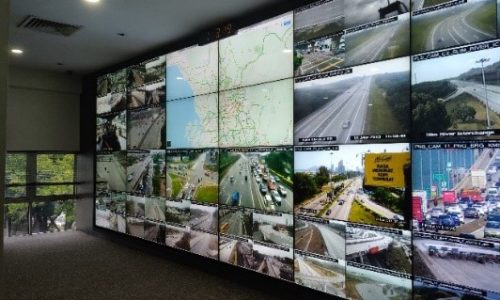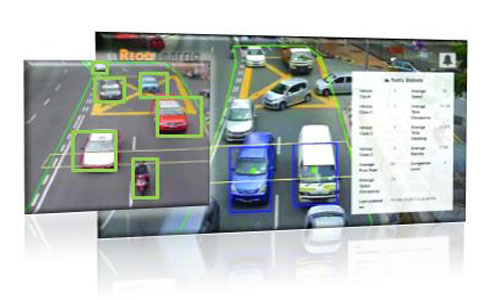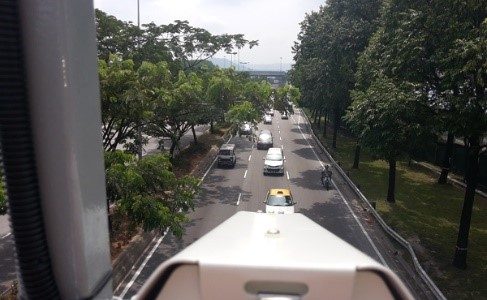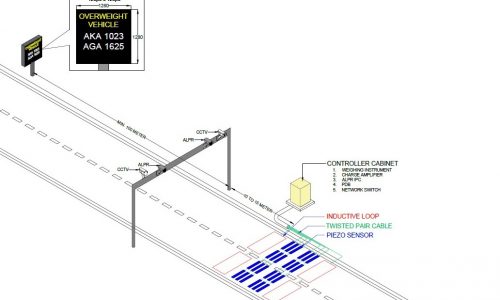EV-Dynamic delivers an integrated, end-to-end, solution from sensors, controllers, information display, communication network and traffic management system in order to visualize, control and manage traffic. The real-time data is analyzed by a traffic management system enabling efficient operation and control of the transport network and disseminating real-time updates to travellers.

Traffic Control & Surveillance System (TCSS)



Video Surveillance System
Video surveillance system is the eyes of any transportation infrastructure operator. The system consists of video surveillance cameras and specialized software designed to manage the cameras and the video feeds and recordings in addition to interfacing with the other systems within a road traffic management and analysis context. It also includes a sub-system for intellectual analysis of the video data.
An indispensable tool in traffic surveillance, CCTV cameras provides surveillance, verification and historical data that enable operators to monitor site conditions and quickly follow up with the necessary actions to optimize the efficiency of a transportation system. Going beyond CCTV cameras, EV-Dynamic’s surveillance system offers an integrated solution that includes automatic video signal analysis and transmissions, recordings and alarm-actuated image displays.

Vehicle Incident Detection System
Improving safety and efficiency of traffic intersections, roads and highways has culminated in the proliferation of VIDS usage. EV-Dynamic’s VIDS uses the available detector data and image streams from road sensors and CCTV cameras to continuously monitor traffic conditions for patterns that may indicate an incident has occurred.
The most common sources of primary data for VIDS
- Inductive loop vehicle detector
- Video-based CCTV cameras
VIDS works by interpretating information (vehicle occupancy, speed and traffic volume) captured from networks of traffic detectors.

Vehicle Classification System
Traffic management is an important factor in city planning and regulating the density of vehicles on the road. For effective traffic management, vehicle classes and vehicle counts are the key parameters that serve as inputs for almost all the use cases for traffic analysis. Classification and counting of vehicles, both moving and stationary, are done by applying image processing (video content analysis) algorithms on video streams taken from a stationary camera.
EV-Dynamic’s VCS (classification and counting) is video-based solutions range from a high-performance VCS engine for general application and a robust, industrial-grade VCS engine for a critical applications.

Variable Message Signs
The Variable Message Signs are used to display messages and information on a real-time basis with a minimum time lag allowing the travellers to get live feeds and information. VMS improves traffic management, especially during the peak hours, minimizing the impact of the alarming increase in the number of vehicles in the city and allowing proper management of the modern-day traffic.
- Electronic Variable Message Signs
- Speed Limits Sign
- Dynamic Road Signs
- Portable Variable Message Signs

Weigh-in-Motion (WIM)
Weigh-in-motion (WIM) system captures and records axle weights and gross vehicle weights while vehicles traveling at a reduced or normal traffic speed without stopping. This makes the weighing process more efficient, and in the case of commercial vehicles, allows for trucks under the weight limit to bypass static scales or inspections.

Speed Detection & Enforcement System
EVD Vehicle Speed Detection system is a video-based solution consisting of image acquisition, image enhancement, image segmentation, image analysis and speed calculation. With the addition of our Automatic Number Plate Recognition (ANPR) analytic module, it can form the basis for an enforcement system providing speed violation information tagged with license plate and the image of the offending vehicle.

